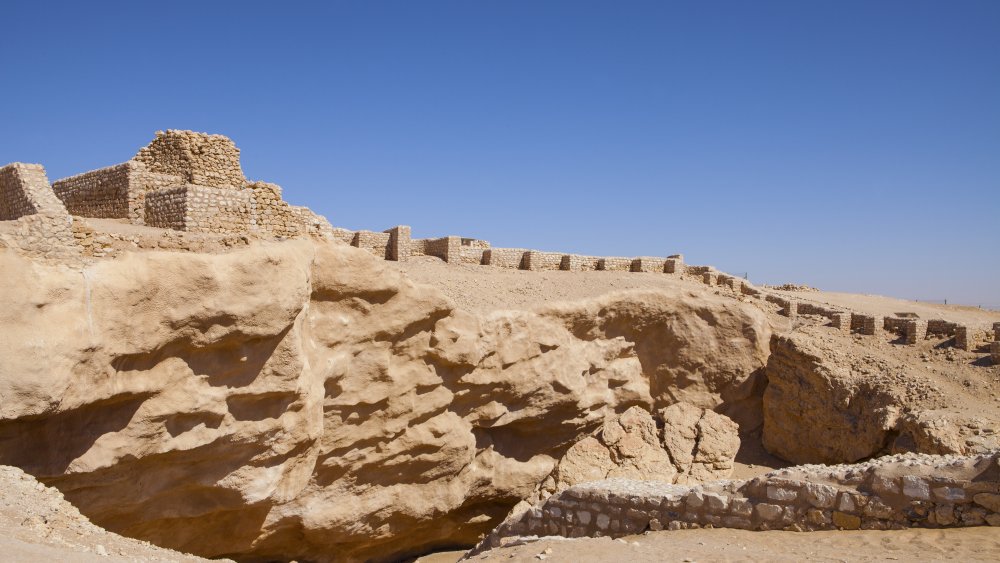Here's Why Iram Of The Pillars Might Actually Have Existed
There are places in this world that have been forgotten, and there are others remembered in legend and only mentioned in fables. Places such as El Dorado, with stories that have rung in human ears for so long, we have no choice but to believe they existed once upon a time. But that's the thing about time. It has a way of blending myth with reality, making it difficult to separate which is which.
Stories of unbelievable hubs of science, like Atlantis. Stories of wicked places filled with sin, like Sodom and Gomorrah. On occasion, they turn out to be very real places. Such might be the case of Iram of the Pillars, a place much like Sodom and Gomorrah, that stems from a sister legend in the Quran.
According to legend, Iram of the Pillars, also known as "Atlantis of the Sands," was a beautiful and advanced city that has a similar tale to that of Sodom and Gomorrah. The inhabitants of the city, known as the Ad, led sinful lives and refused the teachings of Allah. A prophet was sent to the city to try and get them back on the right track, but the Ad refused and Allah wiped Iram from the map — according to Ancient Origins, the desert sands swallowed the city whole. Religious tales are generally regarded as fables meant to teach moral lessons, but there are groups within each ideology that believe these tales to be literal.
Ubar, Iram, same thing
Iram of the Pillars was a center for all things frankincense. Some scholars think that Iram is the fabled lost city of Ubar, mentioned both in the Quran and the folktale collection A Thousand and One Nights. Ubar was discovered in the early 1990s by a team under the leadership of amateur (yes, amateur) archaeologist and filmmaker Nicholas Clapp. Located in Oman near the Qara Mountains, the native home of frankincense, Ubar was in a prime location to make it rich. Frankincense, according to the Los Angeles Times, was literally worth its weight in gold. The region is now a desert, but researchers believe the climate at the time had enough rainfall to sustain the city.
Clapp first started searching after reading Arabia Felix, a written account of British explorer Bertram Thomas's failed search for the city. Clapp had a few advantages that Thomas didn't, like NASA's shuttle radar system and the insanity to ask them for help — and NASA agreed. The radar images showed the old trade routes below the sands, and Clapp's team followed them to what might be the ruins of Iram.
While excavating the site, researchers discovered that the city had indeed been swallowed by the sand. Without knowledge of basic geology, King Shaddad ibn 'Ad had built the city on top of a limestone deposit, which led to a sinkhole, which led to the end of Iram. And an exciting discovery deep in the sands.

